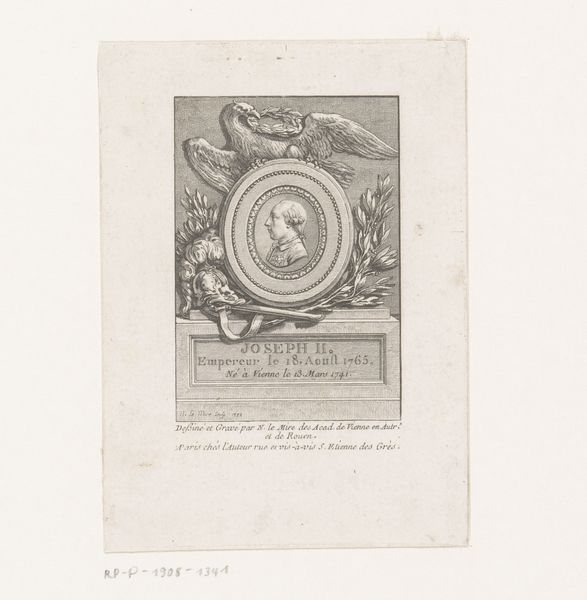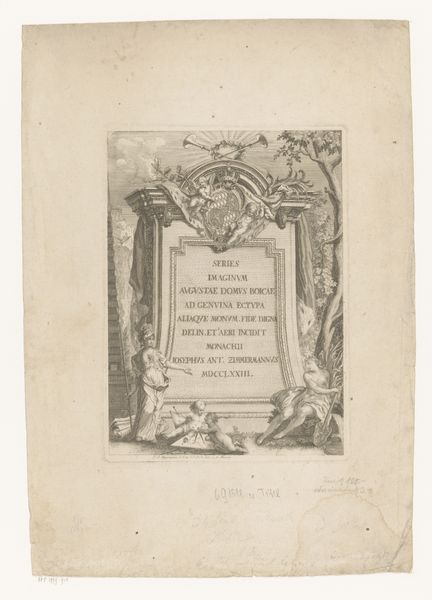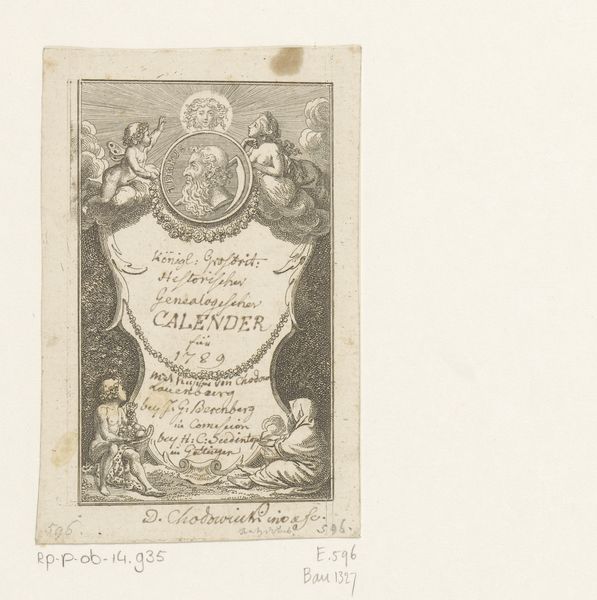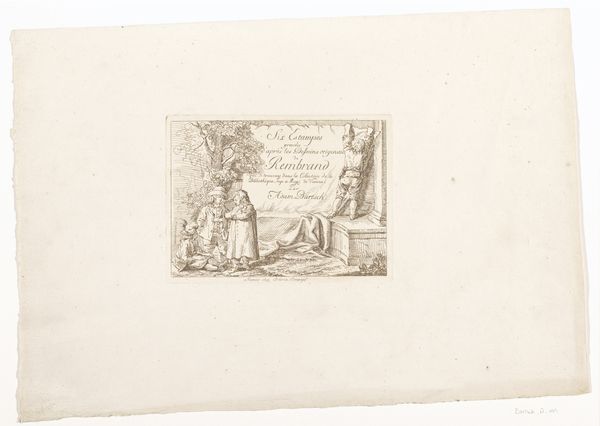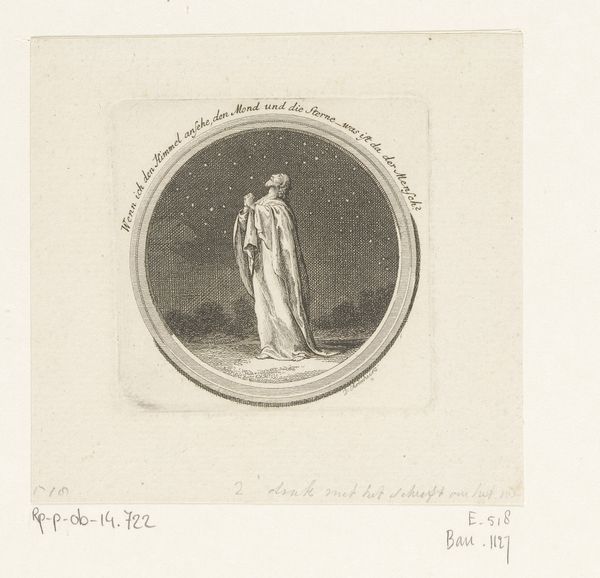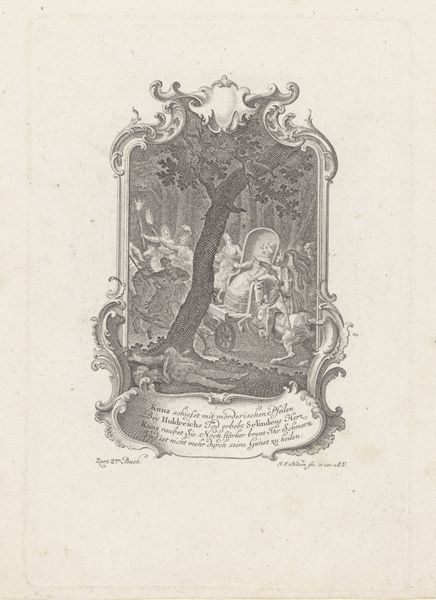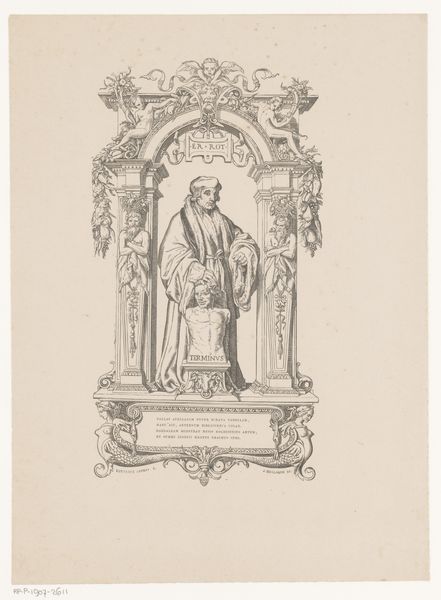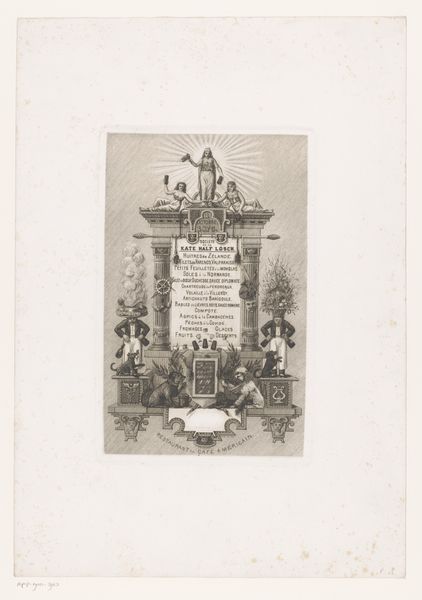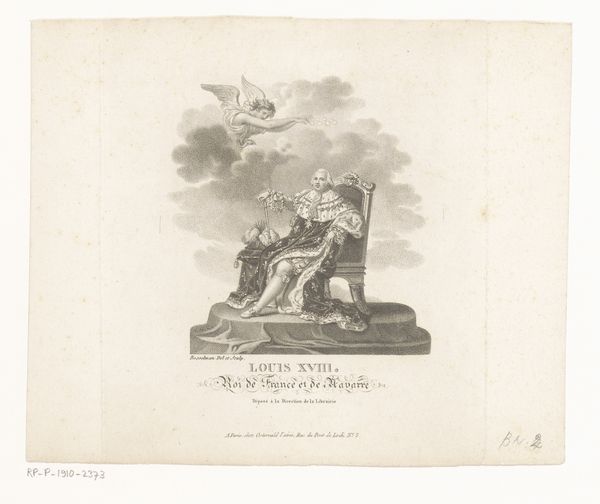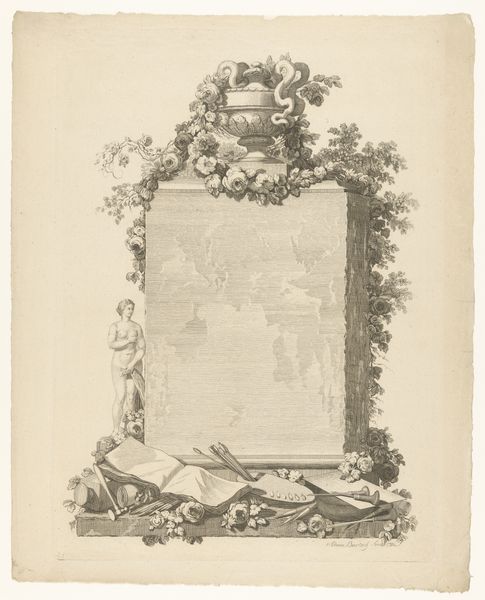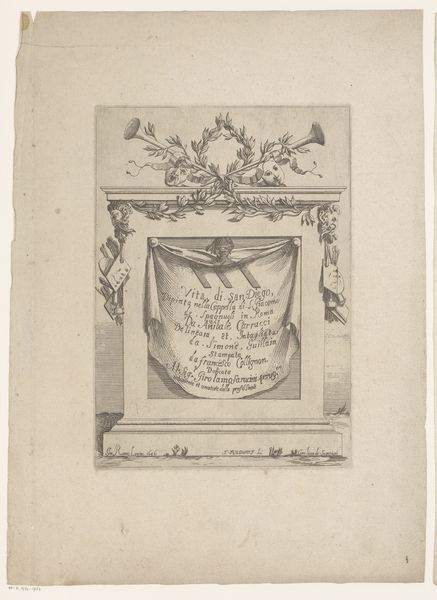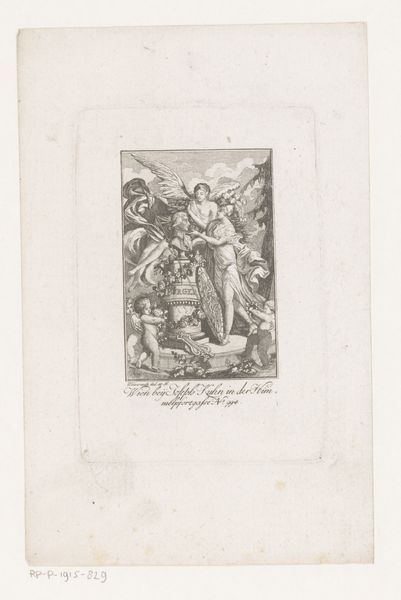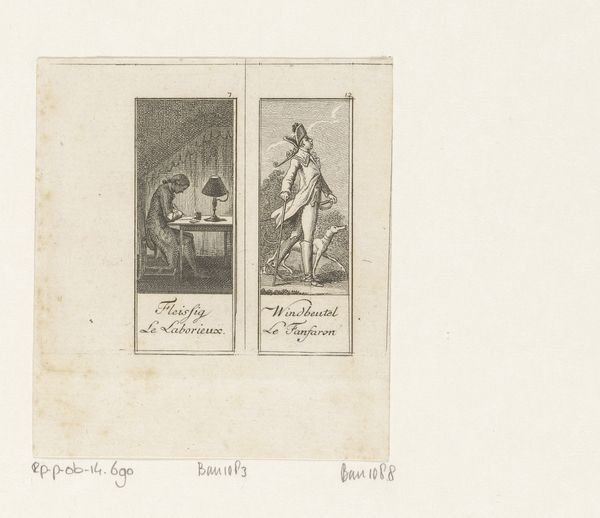
print, etching, engraving
#
neoclacissism
#
allegory
# print
#
etching
#
old engraving style
#
landscape
#
etching
#
figuration
#
history-painting
#
engraving
Dimensions: height 97 mm, width 60 mm
Copyright: Rijks Museum: Open Domain
Curator: Daniel Nikolaus Chodowiecki's etching, "Muze van de dichtkunst" from 1777. It’s held here at the Rijksmuseum. It’s, well, very linear, isn't it? Almost stark. Editor: Stark is a good word. The limited tonal range in the engraving feels so crisp. It makes me wonder about the precision of labor, the craft involved in each line etched onto the plate to mass produce these images and distribute them. There's this tension between the ideal and its reproduction that’s striking. Curator: Mass produced… yes, an interesting point to bring up with an image so preoccupied with idealised forms. This classical figure seems so untouchable, so...elevated, yet the work's origins, it was made for the Muse's Almanac published out of Hamburg! Almost feels… utilitarian. Editor: Utilitarian maybe, but that doesn’t cheapen it, necessarily. Consider the material world it reflects: burgeoning print culture in Hamburg. Also, looking at her gown—draped with what seems such an elegant sensibility—it is likely that it came from far away, India, for instance. Even the depiction embodies networks of labour and access to precious things that are transported for great distances. How do you relate to it, being so tied to ideas of authorship? Curator: Authorship… it feels complicated here, I think. While undeniably *of* Chodowiecki, doesn't it also speak *through* him, drawing inspiration, for instance, from these antique figures in a landscape reminiscent of neoclassicism, so full of symbolism… It gives me that strange impression of floating. Editor: I get what you mean. It makes you feel the way that labor might be "floating," seemingly vanished behind a clean image, but the marks, the time, are all imprinted in the material and process. We simply have to be mindful and attuned enough to feel it in there, like layers, really. Curator: Exactly. It’s the difference between *looking* and truly *seeing*, don't you think? Like a memory, you need the sharp contrast of darkness and light to fully be perceived. Editor: Nicely put. That attention you call to seems, indeed, what remains, centuries on, both within this image and within the materiality and labour that brought it here.
Comments
No comments
Be the first to comment and join the conversation on the ultimate creative platform.
